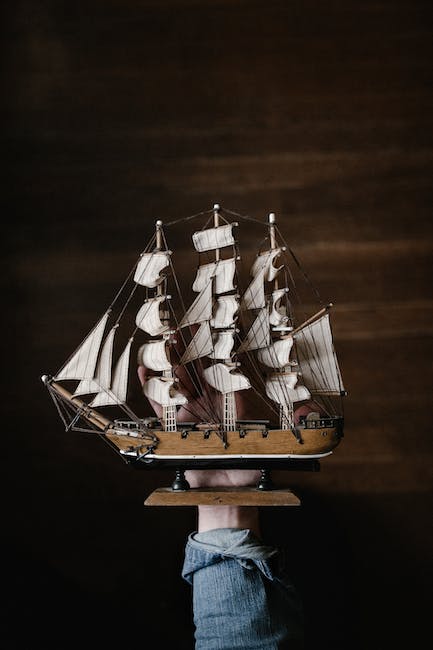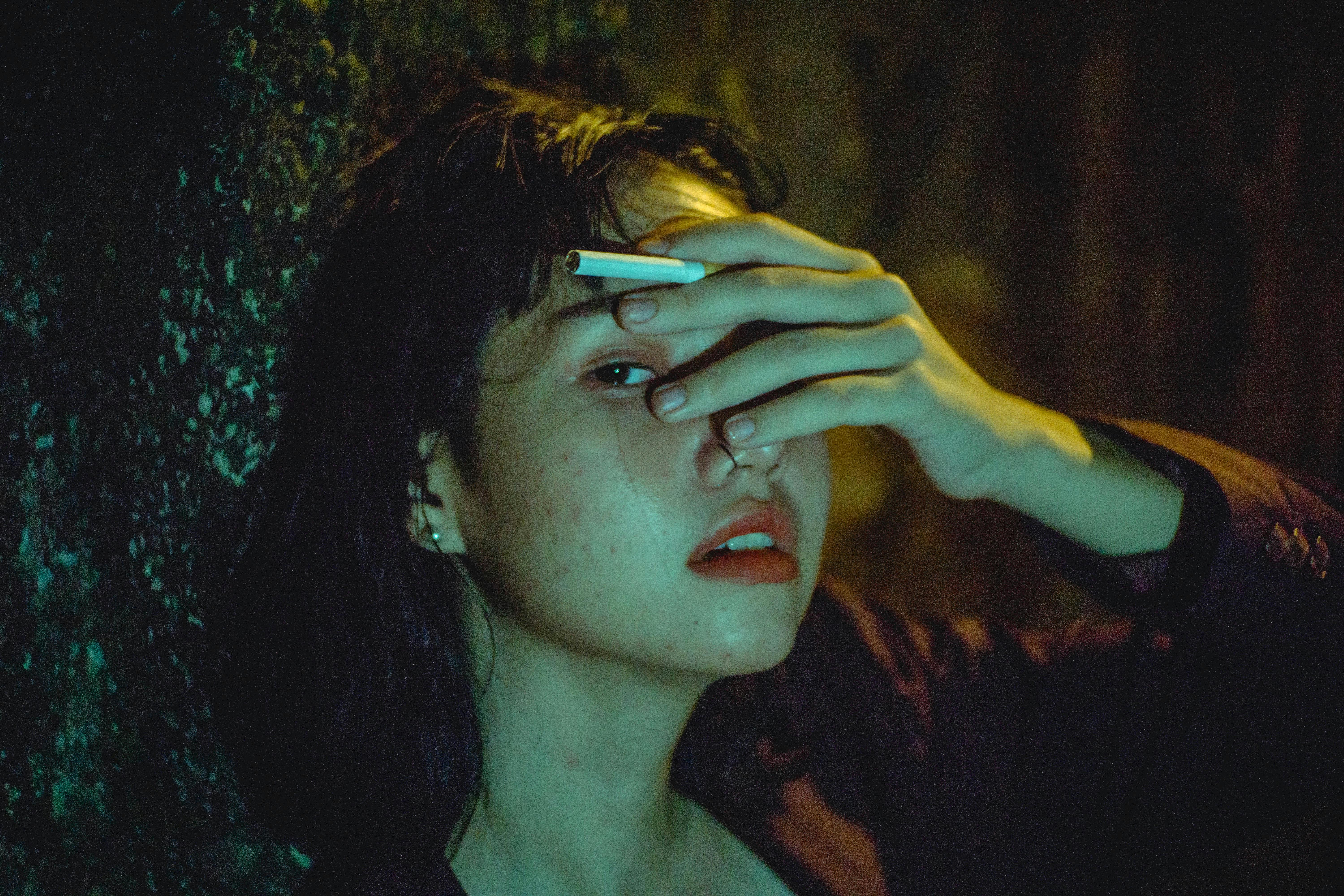Why Did Pirates Wear Eye Patches

Pirates are often associated with eye patches, but why did they wear them? Eye patches were worn by pirates for many reasons. Popular lore suggests that eye patches were worn to cover up missing eyes or to give the pirate a menacing look. In reality, however, eye patches served more practical purposes and could provide a variety of advantages in battle and everyday life.An eye patch is a small patch that is placed over one eye to cover or protect it. It can be made of fabric, plastic, or other materials and typically secures to the head with an elastic band or adhesive tape. Eye patches are commonly used to treat a lazy eye, but they may also be worn for cosmetic reasons or as part of a costume.
Why Do Pirates Wear Eye Patches?
Eye patches have long been associated with pirates, but it’s not clear why they would wear them. There are several theories as to why these swashbucklers may have donned an eye patch. One of the most popular theories is that pirates wore eye patches to improve their vision in low light conditions. By covering one eye, they could adjust more quickly to changes in light levels when entering a dark room or cave.
Another theory suggests that pirates wore the eye patch to protect their eyes from flying debris and other objects during sea battles. By covering one eye, they could reduce the risk of injury or infection.
A third and less romantic explanation is that many pirates had suffered serious injuries to one of their eyes during a fight or battle at sea. Wearing an eye patch allowed them to protect the injured eye and maintain better visibility with their other eye.
Whatever the reason may be, it is clear that the use of an eyepatch has become synonymous with being a pirate. The tradition continues today, with many modern day pirates wearing eyepatches in films and television shows as a sign of their swashbuckling lifestyle.
Possible Medical Reasons for Wearing Eye Patches
Eye patches are commonly worn to treat various eye conditions and injuries. These include strabismus (eye misalignment), amblyopia (lazy eye), ptosis (drooping eyelid), corneal abrasions, and other conditions that require protection of the eye. An eye patch may also be used to cover a blind or injured eye, or to protect the eyes from bright sunlight or other irritants. In some cases, an eye patch may be worn after surgery to reduce the risk of infection. Wearing an eye patch can help the patient better focus on vision therapy exercises, as well as promoting healing of the affected area.
In addition to medical treatments, wearing an eye patch can also be used for cosmetic purposes. This can include hiding a birthmark, discoloration, scarring, or other blemish on the face. An eyepatch can also provide a unique fashion statement when worn with certain outfits or costumes.
The History of Pirate Eye Patches
Pirate eye patches have been a part of the popular culture since the days of old. They are often associated with being a symbol of a swashbuckling pirate, but it’s interesting to note that there is actually a long history behind them and their use.
The most popular theory as to why pirates wore eye patches is that they were used to adjust quickly from light to dark, or vice versa, when going from the deck of the ship to the depths of the hold. This allowed them to maintain optimal vision while sailing in difficult conditions.
In addition to this practical purpose, eye patches were also used as a fashion statement by some pirates. The style was seen as an extension of their attitude and persona and helped set them apart from other sailors. This idea was popularized in literature and film, which reinforced the image of the seafaring pirate wearing an eye patch.
It is also believed that some pirates wore eye patches due to medical reasons such as having lost an eye in battle or suffering from an infection of some kind. In these cases, an eye patch would have been used to protect their remaining good eye from any further damage or infection.
The history behind pirate eye patches makes for interesting reading and provides insight into why they continue to be a popular part of our culture today. While there are many theories as to why pirates wore them, it seems likely that their practical uses in sailing combined with their status as a fashion statement helped ensure their place in popular culture for centuries.
Practical Uses of Eye Patches
Eye patches have been used for centuries to treat a variety of eye conditions. From the traditional pirate-style eye patch to modern medical patches, these devices can be used for both cosmetic and therapeutic purposes. Here are some of the practical uses of eye patches:
To Treat Lazy Eye: A common use of an eye patch is to treat lazy eye, or amblyopia. This condition occurs when your brain fails to develop connections between your eyes and other parts of your body due to lack of stimulation. By covering the stronger eye with an eye patch, it forces the weaker one to work harder and develop those connections.
To Reduce Light Intensity: An eye patch can also be used to reduce light intensity. This is especially helpful for those with light sensitivity, such as those with migraine headaches or photophobia (light sensitivity). An opaque patch can be used during times when the light is too intense, such as during a bright sunny day or when watching television in a dark room.
To Protect Injured Eyes: Eye patches are also useful for protecting injured eyes from further damage. If you have suffered an injury to your eye or cornea, wearing an eye patch can help protect it from further damage caused by dust or other particles that could get into the injured area.
For Cosmetics: An eye patch is also often used as a cosmetic device, particularly by those who want to cover up a black eye or birthmark near their eyes. This is also commonly done by those who want to give their face a mysterious look or create an interesting costume look.

Stylish Uses of Eye Patches
Eye patches are often associated with pirates, but they can also be worn in stylish ways. Wearing an eye patch is no longer restricted to just those who need it for medical purposes; fashion-forward individuals have been seen incorporating these eye-catching accessories into their outfits. They are a great way to add a unique and elegant touch to any look. Here are some stylish uses of eye patches:
One of the most popular ways to use an eye patch is as a fashion accessory. Whether it is paired with a dress or jeans and a T-shirt, an eye patch can make any outfit stand out and look more stylish. Eye patches come in different colors and materials, allowing you to find the perfect one for your look. They can also be dressed up or dressed down, depending on the occasion.
Eye patches can also be used to make a statement. Those who want to make a statement with their outfit can choose an eye patch that expresses their personality or style. There are many creative designs available, so you can find one that matches your personality perfectly.
Eye patches don’t just have to be worn on the face; they can also be used in other creative ways as well. For example, they can be worn on the wrist as a bracelet or even around the neck as a necklace. This adds an interesting touch to any outfit and helps you stand out from the crowd.
Finally, eye patches can be used in more practical ways too. For those who have vision problems that require them to wear an eye patch, there is no need to sacrifice fashion for function; there are plenty of fashionable options available that will help them stay stylish while still protecting their eyesight.
As you can see, there are many stylish uses for eye patches beyond just piracy! Whether you’re looking for something practical or something fun and fashionable, there’s an eye patch out there for you!
Types of Eye Patches
Eye patches come in a variety of sizes, shapes, and materials to suit different needs. The most common type of eye patch is a disposable one made of gauze or adhesive tape. These are often used after eye surgery or to protect the eye from further injury. They are also used when one eye needs to be covered for a period of time, such as during an infection or allergy flare-up.
A more permanent option is a cloth patch that can be used for long-term wear. These patches come in a variety of colors and patterns and attach with an elastic band. Some designs are made for medical use, while others are intended to be decorative.
Therapeutic eye patches may also be available from your doctor or optometrist. These patches contain special materials like magnets, herbal remedies, and electrical stimulation which can help reduce pain and inflammation when worn over the affected eye area.
Finally, there are also specialized contact lenses available that can provide limited vision while protecting the eyes from further damage or irritation. These lenses may be tinted to block out light or have other features that allow them to function as both corrective lenses and an eye patch at the same time.
No matter what type of eye patch you choose, it’s important to follow your doctor’s instructions for wearing it safely and effectively.
Symbolism Behind Pirate Eye Patches
The pirate eye patch has become one of the most iconic symbols of pirate culture. But why were pirates known for wearing eye patches? What is the symbolism behind this fashion statement? The answer lies in the fact that pirates often had to navigate in low light and at night, and an eye patch allowed them to adjust quickly between light and dark.
Pirates would cover one eye with a patch when they were below deck or in a darkened area, this allowed their eyes to adjust more quickly so they could better see in the dark when they went back above deck. This was an important skill for pirates, as it allowed them to spot other ships or land more quickly. It also enabled them to take advantage of surprise attacks if they were able to spot their prey before they were spotted themselves.
The pirate eye patch also served another purpose: intimidation. Pirates wanted people to be afraid of them, and wearing an eye patch was a way to make them look even more menacing and fierce. It was also a way for pirates to stand out from the crowd; it was a symbol of identity that set them apart from regular sailors or citizens on land.
Finally, the pirate eye patch has come to symbolize adventure and exploration. The idea of being a daring explorer or swashbuckling buccaneer has been romanticized in popular culture, and the eye patch is often seen as a symbol of that lifestyle. It serves as a reminder that we can all be adventurous and explore new things, if we are brave enough to do so.
In short, the pirate eye patch has become an iconic symbol with multiple meanings. It is both practical and symbolic; it enables quick vision adjustment in low light while also serving as an intimidating fashion statement and reminder of adventure.

Conclusion
Pirates have always been associated with eye patches, and for good reason. Eye patches were a practical tool for pirates, as they helped protect the eye from the bright sun and wind while sailing. They also served as a disguise, allowing pirates to switch between their identity on land and at sea. Eye patches also symbolized power and mystery, making them a perfect fashion statement for the rebellious pirate lifestyle.
Eye patches were an essential part of the pirate wardrobe, and have become an iconic symbol of piracy throughout history. Whether you are looking to dress up as a pirate or simply want to add some flair to your outfit, consider adding an eye patch- you will be sure to make a bold statement!
In conclusion, it is clear that eye patches were more than just a fashion statement for pirates. They were a practical tool that allowed them to protect their eyes from the elements while sailing and disguise themselves on shore. Furthermore, they became an iconic symbol of piracy throughout history. Therefore, it is no surprise that pirates wore eye patches; they served many important purposes.
